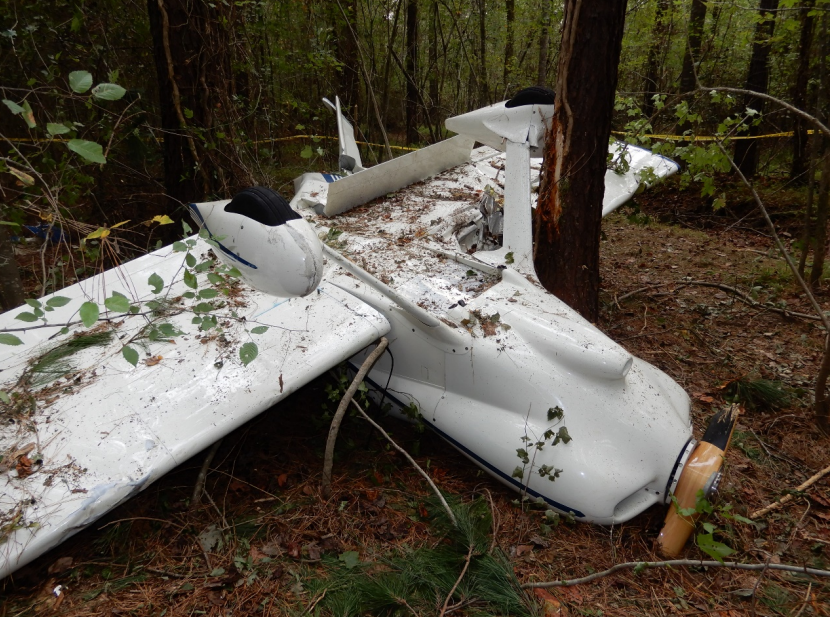
ASN Wikibase Occurrence # 229968
This information is added by users of ASN. Neither ASN nor the Flight Safety Foundation are responsible for the completeness or correctness of this information.
If you feel this information is incomplete or incorrect, you can submit corrected information.
| Date: | Monday 14 October 2019 |
| Time: | 11:56 LT |
| Type: |  Van's RV-4 |
| Owner/operator: | Private |
| Registration: | N4332J |
| MSN: | 1921 |
| Year of manufacture: | 1992 |
| Total airframe hrs: | 1512 hours |
| Engine model: | Lycoming O-320-E2A |
| Fatalities: | Fatalities: 1 / Occupants: 1 |
| Aircraft damage: | Substantial |
| Category: | Accident |
| Location: | near Rooster Field Airport (84NC), Cameron, NC -
 United States of America United States of America
|
| Phase: | Approach |
| Nature: | Private |
| Departure airport: | Camden-Woodward Field, SC (CDN/KCDN) |
| Cameron, NC (84NC) | |
| Investigating agency: | NTSB |
| Confidence Rating: |
The pilot of the experimental, amateur-built airplane departed for his home airport after attending a fly-in event. Shortly after takeoff, the airplane's canopy separated in-flight, and the pilot was able to land safely at the departure airport. Two days later, the pilot chose to fly his airplane home without the canopy and wore a full-face mask motorcycle helmet.
Flight track data from an onboard GPS revealed that, after a seemingly normal flight, the airplane overflew the destination airport and entered the traffic pattern on a left downwind leg. The airplane's groundspeed on the left base leg slowed to 57 knots, and as the airplane continued the left turn onto final approach, the last recorded groundspeed was 54 knots. The wreckage was located in a heavily wooded area near the runway's extended centerline about .25 mile from the runway threshold. The initial impact point and main wreckage were located closely together, indicative of the airplane impacting terrain in a steep downward flightpath. Examination of the airplane and engine components revealed no evidence of preimpact mechanical malfunctions or failures, and propeller signatures were consistent with the engine producing power at the time of impact.
Review of three previous GPS flight tracks all flown to the same runway in the same month as the accident flight revealed that the traffic pattern flown during the accident flight was considerably closer to the runway laterally. The closer proximity to the runway would have required steeper turns and likely more aggressive maneuvering compared to the recent traffic patterns the pilot had flown. The reason for the pilot's decision to fly a closer traffic pattern than usual could not be determined.
The pilot's decision to fly the airplane without the canopy, and with a motorcycle helmet, likely increased several risk factors for the flight. Although the kit manufacturer published no official data regarding how the airplane performed without a canopy, the manufacturer reported that its aerodynamic stall speed was likely increased, and it was possible that its elevator and rudder control effectiveness was decreased due to the change in airflow over the empennage. Additionally, the manufacturer reported the potential for pitot-static instrument error due to abnormal airflow over the airplane's static ports.
The pilot's normal physical and perceptual cues to avoid a loss of control, such as normal airflow sounds over the canopy, were likely distorted since he had likely never flown the airplane with a motorcycle helmet and had only flown the airplane without the canopy in the previous flight. It is also likely that the pilot encountered an undesirable quartering gusting tailwind on base and final approach.
Based upon the flight track data, the likely quartering tailwind, and the many risk factors added by flying the airplane without a canopy, it is likely that the pilot exceeded the airplane's critical angle of attack on the base to final turn, and the airplane entered an aerodynamic stall and spin and impacted trees and terrain short of the runway.
Probable Cause: The pilot's exceedance of the airplane's critical angle of attack during the landing approach, which resulted in a loss of control and a subsequent aerodynamic stall/spin. Contributing to the accident was the pilot's decision to fly the airplane in a configuration for which it was not certificated and in which the flight characteristics were not known.
Accident investigation:
 |
|
Sources:
NTSB ERA20FA009
FAA register: https://registry.faa.gov/aircraftinquiry/NNum_Results.aspx?NNumbertxt=4332J
Location
Images:

Photo(c): NTSB
Media:
NTSB investigating the Oct. 14, 2019, crash of a Van\'s RV-4 airplane, Cameron, NC.
— NTSB_Newsroom (@NTSB_Newsroom) October 15, 2019
Revision history:
| Date/time | Contributor | Updates |
|---|---|---|
| 15-Oct-2019 16:53 | Captain Adam | Added |
| 15-Oct-2019 17:29 | Geno | Updated [Registration, Cn, Total fatalities, Total occupants, Other fatalities, Departure airport, Destination airport, Source, Embed code, Narrative] |
| 15-Oct-2019 17:43 | Captain Adam | Updated [Narrative] |
| 15-Oct-2019 20:22 | Captain Adam | Updated [Phase, Narrative] |
| 20-Oct-2019 09:24 | The2ndBaron | Updated [Damage] |
| 06-Mar-2022 00:04 | Captain Adam | Updated [Time, Location, Departure airport, Destination airport, Narrative, Category, Photo] |
| 08-Jul-2022 12:13 | ASN Update Bot | Updated [Time, Other fatalities, Nature, Destination airport, Source, Embed code, Damage, Narrative, Category, Accident report] |
Corrections or additions? ... Edit this accident description
The Aviation Safety Network is an exclusive service provided by:


 ©2024 Flight Safety Foundation
©2024 Flight Safety Foundation